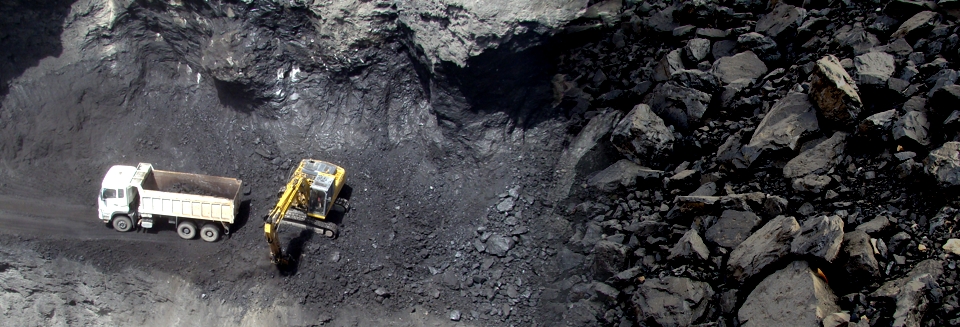MSDS GILSONIITE

Material Safety Data Sheet Gilsonite
1. CHEMICAL PRODUCT AND COMPANY IDENTIFICATION
| TRADE NAME: | GILSONITE " Natural Asphalt" |
| APPLICATIONS: | Asphalt Roofing Felt, Oil well drilling fluid additive. Fluid Loss reducer |
| EMERGENCY TELEPHONE: | (+60) 17-242 4951 |
| SUPPLIER: | Supplied by a Business Unit of CHEMICAL MINE WORLD LTD |
| TELEPHONE: | (+60)362434951 |
| FAX: | (+60)321644197 |
| CONTACT PERSON: | Mr. Mehdi Tavajjoh |
2. COMPOSITION, INFORMATION ON INGREDIENTS
| INGREDIENT NAME: | CAS No.: | CONTENTS :EPA RQ: | TPQ: |
| Gilsonite | 12002-43-6 | 100% | |
| COMPOSITION COMMENTS: The National Institute for Occupational Safety and Health (NIOSH) was unable to detect polynuclear aromatic hydrocarbons in Gilsonite. |
|||
3. HAZARDS IDENTIFICATION
EMERGENCY OVERVIEW:
CAUTION! MAY CAUSE EYE, SKIN AND RESPIRATORY TRACT IRRITATION. Avoid contact with eyes, skin and clothing. Avoid breathing airborne product. Keep container closed. Use with adequate ventilation. Wash thoroughly after handling.
This product is a/an black powder. A nuisance dust. May form explosive dust-air mixtures. Slippery when wet. Dike and contain spills. Keep out of sewers and waterways. No significant immediate hazards for emergency response personnel are known.
ACUTE EFFECTS:
HEALTH HAZARDS, GENERAL:
Particulates may cause mechanical irritation to the eyes, nose, throat and lungs. Particulate inhalation may lead to pulmonary fibrosis, chronic bronchitis, emphysema and bronchial asthma. Dermatitis and asthma may result from short contact periods.
INHALATION: May be irritating to the respiratory tract if inhaled.
INGESTION: May cause gastric distress, nausea and vomiting if ingested.
SKIN: May be irritating to the skin.
EYES: May be irritating to the eyes.
CHRONIC EFFECTS:
CARCINOGENICITY:
IARC: Not listed. OSHA: Not regulated. NTP: Not listed.
ROUTE OF ENTRY:
Inhalation. Skin and/or eye contact.
TARGET ORGANS:
Respiratory system, lungs. Skin. Eyes.
4. FIRST AID MEASURES
GENERAL: Persons seeking medical attention should carry a copy of this MSDS with them.
INHALATION: Move the exposed person to fresh air at once. Perform artificial respiration if breathing has stopped. Get medical attention.
INGESTION: Drink a couple of glasses water or milk. DO NOT induce vomiting unless directed to do so by a physician. Never give anything by mouth to an unconscious person. Get medical attention.
SKIN: Wash skin thoroughly with soap and water. Remove contaminated clothing. Get medical attention if any discomfort continues.
EYES: Promptly wash eyes with lots of water while lifting the eye lids. Continue to rinse for at least 15 minutes. Get medical attention if any discomfort continues.
5. FIRE FIGHTING MEASURES
METHOD: Cd OC (Cleveland open cup).
| FLASH POINT (°F): | 599 |
| AUTO IGNITION TEMP. (°F): | N/D |
| FLAMMABILITY LIMIT - LOWER(%): | N/D |
| FLAMMABILITY LIMIT - UPPER(%): | N/D |
EXTINGUISHING MEDIA:
Carbon dioxide (CO2). Dry chemicals. Foam. Water spray, fog or mist.
SPECIAL FIRE FIGHTING PROCEDURES:
Wear positive-pressure, self-contained breathing apparatus (SCBA) and protective fire fighting clothing (including fire fighting helmet, coat, pants, boots, and gloves). If protective equipment is not available or not used, fight fire from a protected location or safe distance.
UNUSUAL FIRE & EXPLOSION HAZARDS:
Dust in high concentrations may form explosive mixtures with air.
HAZARDOUS COMBUSTION PRODUCTS:
Irritating gases/vapors/fumes. Oxides of: Carbon. and Nitrogen.
6. ACCIDENTAL RELEASE MEASURES
PERSONAL PRECAUTIONS:
Wear proper personal protective equipment (see MSDS Section 8).
SPILL CLEAN-UP PROCEDURES:
Avoid generating and spreading of dust. Shovel into dry containers. Cover and move the containers. Flush the area with water. Do not contaminate drainage or waterways. Repackage or recycle if possible.
7. HANDLING AND STORAGE
HANDLING PRECAUTIONS:
Avoid handling causing generation of dust. Wear full protective clothing for prolonged exposure and/or high concentrations. Eye wash and emergency shower must be available at the work place. W hands often and change clothing when needed. Provide good ventilation.Mechanical ventilation or local exhaust ventilation is required.
STORAGE PRECAUTIONS:
Store at moderate temperatures in dry, well ventilated area. Keep in original container.
8. EXPOSURE CONTROLS, PERSONAL PROTECTION
| OSHA PEL: | ACGIH TLV: | OTHER: | |||||
| INGREDIENT NAME: | CAS No.: | TWA: STEL: | TWA: | STEL: | TWA: | STEL: | UNITS: |
| Gilsonite | 12002-43-6 | 5 | 3 | mg/m3 resp.dust |
|||
INGREDIENT COMMENTS:
No exposure limits noted for ingredient(s). Exposure limits are for Particulates Not Otherwise Classified (PNOC).
ENGINEERING CONTROLS:
Use appropriate engineering controls such as, exhaust ventilation and process enclosure, to reduce air contamination and keep worker exposure below the applicable limits.
VENTILATION:
Supply natural or mechanical ventilation adequate to exhaust airborne product and keep exposures below the applicable limits.
RESPIRATORS:
Use at least a NIOSH-approved N95 half-mask disposable or reuseable particulate respirator. In work environments containing oil mist/aerosol use at least a NIOSH-approved P95 half-mask disposable or reuseable particulate respirator.
PROTECTIVE GLOVES:
Use suitable protective gloves if risk of skin contact.
EYE PROTECTION:
Wear dust resistant safety goggles where there is danger of eye contact.
PROTECTIVE CLOTHING:
Wear appropriate clothing to prevent repeated or prolonged skin contact.
HYGIENIC WORK PRACTICES:
Wash promptly with soap and water if skin becomes contaminated. Change work clothing daily if there is any possibility of contamination.
9. PHYSICAL AND CHEMICAL PROPERTIES
| APPEARANCE/PHYSICAL STATE: | Powder, dust. | |
| COLOR: | Black. | |
| ODOR: | Hydrocarbon. | |
| SOLUBILITY DESCRIPTION: | Insoluble in water. | |
| MELT./FREEZ. POINT (°F, interval): | 275 - 399 | |
| DENSITY/SPECIFIC GRAVITY (g/ml): | 1.04 - 1.05 | TEMPERATURE (°F): 61 |
| VAPOR DENSITY (air=1): | N/A | .- - - |
| VAPOR PRESSURE: | N/A | TEMPERATURE (°F): |
| pH-VALUE, DILUTED SOLUTION: | N/A | CONCENTRATION (%,M): |
10. STABILITY AND REACTIVITY
STABILITY: Normally stable.
CONDITIONS TO AVOID: Avoid heat.
HAZARDOUS POLYMERIZATION: Will not polymerize.
POLYMERIZATION DESCRIPTION: Not relevant.
MATERIALS TO AVOID: Strong oxidizing agents.
HAZARDOUS DECOMPOSITION PRODUCTS: No specific hazardous decomposition products noted.
11. TOXICOLOGICAL INFORMATION
TOXICOLOGICAL INFORMATION:
No significant health effects were observed in a chronic feeding study conducted for the National Toxicology Program (NTP) where mice and rats were fed diets containing either 2% or 4% Gilsonite for their lifetimes.
In anothe study, 10% Gilsonite in benzene applie 3 times a week for 80 weeks to the ski of mice caused no increase in skin cancer over what was observed in the control group. Gilsonite distilled at approximately 2500 F and dissolved in benzene was a carcinogenic when applied 3 times a week for 80 weeks to the skin of mice. Although Gilsonite is not a carcinogen, processes in which Gilsonite is brought to very high temperatures may alter its complex hydrocarbon structure and may produce carcinogenic substances. A sample of Gilsonite heated to 550 F and cooled was not found to be mutagenic in the Ames assay. A sample heated to 650 F and allowed to cool was found to be mutagenic.
12. ECOLOGICAL INFORMATION
ECOLOGICAL INFORMATION:
Contact M-I Environmental Affairs for ecological information.
13. DISPOSAL CONSIDERATIONS
WASTE MANAGEMENT:
This product does not meet the criteria of a hazardous waste if discarded in its purchased form. Under RCRA, it is the responsibility of the user of the product to determine at the time of disposal, whether the product meets RCRA criteria for hazardous waste. This is because product uses, transformations, mixtures, processes, etc, may render the resulting materials hazardous. Empty containers retain residues. All labeled precautions must be observed.
DISPOSAL METHODS:
Recover and reclaim or recycle, if practical. Should this product become a waste, dispose of in a permitted industrial landfill. Ensure that containers are empty by RCRA criteria prior to disposal in a permitted industrial landfill.
14. TRANSPORT INFORMATION
| PRODUCT RQ: | N/A |
| U.S. DOT: | Not regulated. |
| U.S. DOT CLASS: | |
| CANADIAN TRANSPORT: | Not regulated. |
| TDGR CLASS: | |
| SEA TRANSPORT: | Not regulated. |
| IMDG CLASS: | |
| AIR TRANSPORT: | Not regulated. |
| ICAO CLASS: |
15. REGULATORY INFORMATION
| REGULATORY STATUS OF INGREDIENTS: | ||||||
| NAME: | CAS No: | TSCA: | CERCLA: SARA 302: | SARA 313: | DSL(CAN): | |
| Gilsonite | 12002-43-6 | Yes | No | No | No | Yes |
US FEDERAL REGULATIONS:
WASTE CLASSIFICATION: Not a hazardous waste by U.S. RCRA criteria. See Section 13.
REGULATORY STATUS: This Product or its components, if a mixture, is subject to following regulations (Not meant to be all inclusive - selected regulations represented):
SECTION 313: This product does not contain toxic chemical subject to the reporting requirements of Section 313 of Title III of the Superfund Amendment and Reauthorization Act of 1986 and 40 CFR Part 372.
SARA 311 Categories:
1: Immediate (Acute) Health Effects.
The components of this product are listed on or are exempt from the following international chemical registries: TSCA (U.S.)
STATE REGULATIONS:
This product or its components, if a mixture, is subject to following regulations (Not meant to be all inclusive - selected regulations represented): None.
PROPOSITION 65:
This product does not contain chemicals considered by the State of California's Safe Drinking Water and Toxic Enforcement Act of 1986 as causing cancer or reproductive toxicity, and for which warnings are now required.
CANADIAN REGULATIONS:
REGULATORY STATUS:
This Material Safety Data Sheet has been prepared in compilance with the Controled Product Regulations.
Canadian WHMIS Classification: Not a Controlled Product.
16. OTHER INFORMATION
NPCA HMIS HAZARD INDEX: 0 Minimal Hazard
FLAMMABILITY: 1 Slight Hazard
REACTIVITY: 0 Minimal Hazard
NPCA HMIS PERS. PROTECT. INDEX: E - Safety Glasses, Gloves, Dust Respirator
USER NOTES: N/A = Not applicable N/D = Not determined
INFORMATION SOURCES:
OSHA Permissible Exposure Limits, 29 CFR 1910, Subpart Z, Section 1910.1000, Air Contaminants. ACGIH Threshold Limit Values and Biological Exposure Indices for Chemical Substances and Physical Agents (latest edition). Sax's Dangerous Properties of Industrial Materials, 9th ed., Lewis, R.J. Sr., (ed.), VNR, New York, New York, (1997).
Product information provided by the commercial vendor(s).
PREPARED BY: Mehdi Tavajjoh
REVISION No.: 0
MSDS STATUS: Approved.
DATE: March 9, 2010
DISCLAIMER:
MSDS furnished independent of product sale. While every effort has been made to accurately describe this product, some of the data are obtained from sources beyond our direct supervision. We cannot make any assertions as to its reliability or completeness; therefore, user may rely on it only at user's risk. We have made no effort to censor or conceal deleterious aspects of this product. Since we cannot anticipate or control the conditiions under which this information and product may be used, we make no guarantee that the precautions we have suggested will be adequate for all individuals and/or situations. It is the obligation of each user of this product to comply with the requirements of all applicable laws regarding use and disposal of this product. Additional information will be furnished upon request to assist the user; however, no warranty, either expressed or implied, nor liability of any nature with respect to this product or to the data herein is made or incurred hereunder.
RESPIRATORS: Use at least a NIOSH-approved N95 half-mask disposable or reuseable particulate respirator. In work environments containing oil mist/aerosol use at least a NIOSH-approved P95 half-mask disposable or reuseable particulate respirator.


